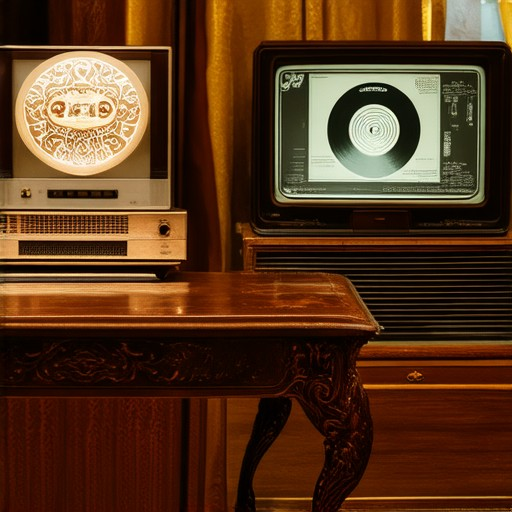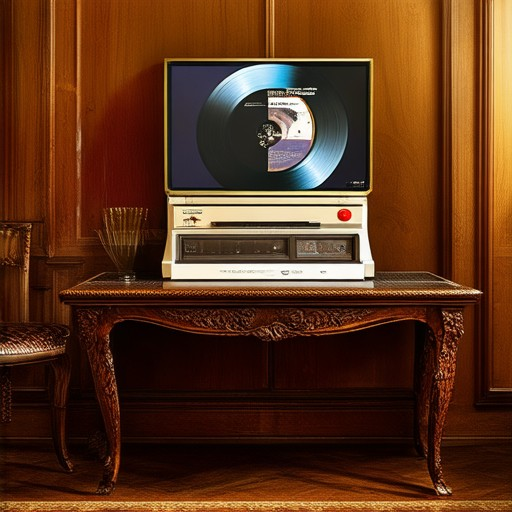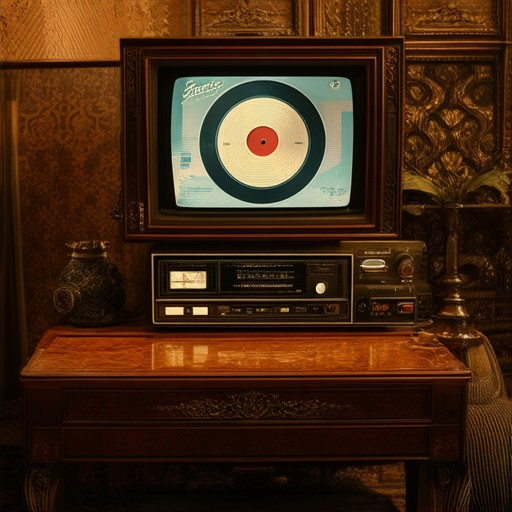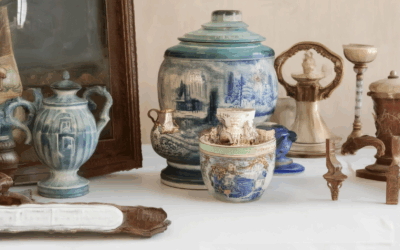Retro and antique styles have long been synonymous with timeless elegance and a connection to the past. While both terms evoke a sense of nostalgia, they represent distinct eras and aesthetics that reflect unique cultural contexts. Retro styles often draw inspiration from the mid-20th century, blending vibrant colors, geometric patterns, and iconic designs that resonate with a sense of the 70s, 80s, and beyond. In contrast, antique styles signify items that are genuinely old, often dating back several centuries, carrying a history that adds intrinsic value. Yet, the lines between retro and vintage can blur, leaving many to wonder about the differences, timelines, and nuances that define these styles. From furniture to clothing, collectibles to home decor, understanding the distinctions between retro and antique styles can help enthusiasts appreciate their evolution and appeal. Whether you’re curating a vintage-inspired space or exploring the allure of retro design, this exploration delves into the key aspects of these enduring styles, offering insights into their origins, characteristics, and the reasons why they continue to captivate audiences worldwide.
Key Takeaways
– Diverse Categories of Antiques: From historical artifacts to decorative items, antiques reflect various eras and cultures, catering to collectors with unique tastes.
– Understanding Antique vs. Vintage: Antiques are at least 100 years old, while vintage items span the late 19th to mid-20th centuries, focusing on design and cultural resonance.
– Authenticity and Condition: Always inspect items for authenticity and condition to preserve their value and historical integrity.
– Preservation Tips: Maintain antiques and vintage pieces through proper care, including climate-controlled storage and professional conservation where needed.
– Market Demand: The 100-year rule influences the value of antiques, making them highly sought after in the collectors’ market.
– Research and Resources: Explore platforms like Etsy, eBay, and Heritage Auctions to find authentic retro and antique items.

How Do Retro and Vintage Styles Differ?
Retro and vintage styles are often confused, but they have distinct characteristics and meanings. Here’s a breakdown of the key differences:
- Vintage Style: Vintage fashion refers to clothing and accessories that are authentic and original from a specific historical period. These pieces are often rare, unique, and irreplaceable, making them highly sought after by collectors and enthusiasts.
- Retro Style: Retro fashion, on the other hand, is about recreating the looks of a past era or decade. While retro styles may not always be original, they aim to capture the essence of a particular time through careful design and fabrication. Modern manufacturers create these pieces to mimic the aesthetic of earlier periods.
The primary distinction lies in their origins and authenticity:
- Authenticity: Vintage items are undeniably real and were created during the time they represent. Retro pieces, while inspired by the past, are typically modern interpretations and may not carry the same historical significance.
- Design Inspiration: Both styles draw from past eras, but vintage focuses on preserving history, while retro focuses on reviving it for contemporary audiences.
When shopping for vintage and retro pieces, consider the following:
- Vintage Clothing: Often found at antique stores, flea markets, or specialized vintage shops, these pieces are one-of-a-kind and reflect the craftsmanship of the past.
- Retro-Inspired Clothing: Available through various retailers, these modern takes on classic styles blend historical influences with today’s fashion trends.
Both styles cater to those who appreciate history, nostalgia, and unique designs. Whether you’re looking for something truly historic or a fresh take on the past, there’s a style for every taste.
Explore our vintage collection or shop our retro-inspired pieces to find your perfect fit!
Is 20 Years Retro or Vintage?
A 20-year-old item can fall under both “retro” and “vintage” depending on its context and styling.
Vintage
Vintage typically refers to items from a specific historical era, often spanning from around 20 to 99 years old. This term is associated with a particular time period, such as the 1950s or 1970s, and carries a sense of historical significance.
Retro
Retro, on the other hand, describes items that are styled after or inspired by designs from previous decades, particularly the 1960s, 1970s, 1980s, and early 2000s. These items may be newly manufactured but mimic the look of older eras.
Overlap at 20 Years
An item that is exactly 20 years old could be considered both retro and vintage. For example, something made in 2005 might be seen as vintage if it reflects a specific historical style, while also being retro if it mimics designs from the 1980s or 1990s.
Context Matters
The classification ultimately depends on how the item is designed and perceived. Something functional and timeless might lean toward vintage, while something clearly inspired by a past decade would be retro.

Understanding the Different Levels of Vintage
The term “vintage” refers to items that reflect the cultural, social, and artistic trends of a particular era. To better understand its nuances, let’s explore the various levels of vintage:
1. Antique
An antique item is typically defined as something that is at least 100 years old. These pieces hold significant historical value and often represent earlier eras. Antiques are highly sought after for their craftsmanship and historical significance. Examples include vintage jewelry from the Art Deco period or classic furniture designs from the mid-19th century.
2. Vintage
Vintage items are slightly newer than antiques, generally dating back between 22 and 99 years old. Unlike antiques, vintage pieces are not necessarily rare or museum-quality but are instead characterized by their connection to a specific era. A vintage car from the 1950s, for instance, carries the charm and style of that decade. The key distinction is that vintage items are genuine representatives of their time, often reflecting the fashions, technologies, and societal norms of the past.
3. Retro
Retro design refers to items that mimic the style of a previous era but are not necessarily authentic vintage pieces. Retro products are created to evoke nostalgia for a particular time, often blending elements of multiple decades. While retro items may lack the originality of vintage pieces, they offer a modern take on classic designs. For example, a retro-inspired apron might resemble one from the 1940s but is made for contemporary use.
Distinguishing Between Vintage and Retro
It’s important to differentiate between vintage and retro. Vintage items are originals from a specific era, while retro pieces are modern creations inspired by the past. Both can hold sentimental value, but their authenticity varies. At Retro Sales, we specialize in bringing these timeless pieces to life, connecting you with the charm of yesteryear through carefully curated vintage finds and thoughtfully designed retro lifestyle items.
To explore our collection of vintage and retro items, visit us at Retrosales.org . Our platform offers a unique shopping experience, combining the allure of authentic vintage goods with the charm of retro-inspired designs.

Types of Antiques
Antiques encompass a wide variety of items that reflect the artistic and cultural heritage of different eras. Here are some common categories:
- Historical Antiques: Items dating back several centuries, often reflecting the craftsmanship and design of earlier times. These include furniture, jewelry, and decorative objects from civilizations like ancient Rome, Egypt, and China.
- Modern Antiques: Pieces from the late 19th and early 20th centuries, known for their intricate designs and historical significance. Examples include Art Nouveau and Art Deco items.
- Functional Antiques: Objects created primarily for utility rather than decoration, such as tools, kitchen utensils, and agricultural equipment. These often retain their original functionality.
- Decorative Antiques: Items designed purely for aesthetic appeal, such as porcelain figurines, stained glass windows, and tapestries. These are often found in museums and galleries.
- Asian Antiques: Includes Chinese porcelain, Japanese swords, and Indian textiles, showcasing the rich cultural history of Asia.
- Primitive Antiques: Artifacts from prehistoric times, such as stone tools and cave paintings, offering a glimpse into early human life.
When collecting antiques, consider visiting platforms like Etsy or eBay for a diverse selection. For rare and high-value items, explore auction houses such as Heritage Auctions .
Remember to inspect items for authenticity and condition before purchasing. Antiques require careful handling and preservation to maintain their value and historical integrity.
Antique vs. Vintage: Understanding the Differences
The terms “antique” and “vintage” are often used interchangeably, but they have distinct meanings and contexts. Understanding the differences between them can help you appreciate their unique characteristics and make informed decisions when shopping for retro items.
Antique
An antique is generally defined as an item that is at least 100 years old. These pieces are often associated with historical significance and craftsmanship from earlier eras. Antiques can range from simple tools and furniture to intricate jewelry and art pieces. Collectors often seek out antiques for their historical value and unique storytelling.
Vintage
Vintage refers to items from a specific era, typically spanning the late 19th to mid-20th centuries. While there is some overlap with antiques, vintage items are usually characterized by their design aesthetic and cultural significance rather than age alone. Vintage fashion, for instance, emphasizes the style and era in which the piece was made, often appealing to those who appreciate retro fashion and nostalgia.
Key Differences
- Age: Antiques are at least 100 years old, while vintage items can range from the late 1800s to the mid-1900s.
- Significance: Antiques may carry historical importance, while vintage items are often celebrated for their design and cultural resonance.
- Preservation: Both require careful preservation to maintain their value and condition, though antiques may prioritize originality and wear over restoration.
Historical Context
Understanding the historical background of these terms adds depth to their appreciation. The rise of industrialization in the late 19th century led to a shift in craftsmanship, making antiques from earlier periods highly valued. Meanwhile, the mid-20th-century era saw the rise of iconic designs that are now synonymous with the vintage aesthetic.
Practical Tips
- When Buying: Examine the item’s condition and provenance to determine its authenticity. Look for labels, dates, or signatures that confirm its era.
- When Selling: Highlight the item’s origins and unique features to attract collectors and enthusiasts.
Preservation and Care
Maintaining the integrity of antiques and vintage items is crucial. Regular cleaning and storage in a climate-controlled environment can extend their lifespan. For fragile items, professional conservation may be necessary to prevent damage.
Retro Sales offers a curated selection of both antique and vintage items, providing a seamless shopping experience for enthusiasts. Explore our collection today and discover the charm of yesteryear with confidence in our authentic pieces.
Shop Vintage & Antique Items

What is the 100-Year Rule for Antiques?
The 100-year rule is a commonly accepted definition for what constitutes an antique. An item is generally considered antique if it is at least 100 years old and is in original condition. However, this rule does have exceptions and variations depending on the type of item and regional definitions.
- General Definition :
- Most sources define an antique as an item that is at least 100 years old and has retained its original form without significant modifications or repairs.
- Exceptions often apply to certain categories, such as motor vehicles, which may be considered antique with fewer years of age. Some definitions require automobiles to be at least 25 years old to qualify as an antique.
- Regional Variations :
- Different countries and regions may have slightly varying thresholds. For example, some European countries may consider items older than 50 years as antiques, while others stick to the traditional 100-year mark.
- In the United States, the 100-year rule is widely accepted, though exceptions are made for certain items like firearms, which may require a longer age threshold.
- Market Demand :
- The 100-year rule influences the value and desirability of antiques in the collector’s market. Items that meet the criteria are often highly sought after due to their historical significance and rarity.
- Retro Sales offers a curated selection of vintage items that align with this definition, providing a platform for enthusiasts to discover and collect authentic pieces from the past.
Competitors
- Etsy is another popular platform for vintage and antique items, offering a wide variety of goods.
- eBay also features a significant selection of antiques and vintage goods, though prices can vary widely.
By adhering to the 100-year rule and its exceptions, Retro Sales ensures that all listed items meet the highest standards of authenticity and quality, appealing to collectors and enthusiasts worldwide.




0 Comments